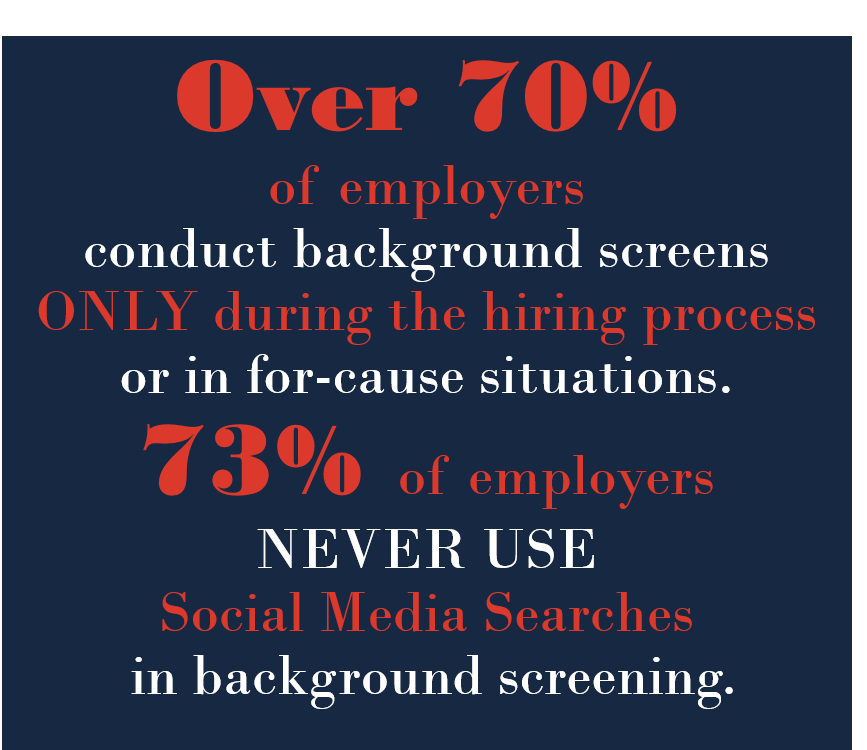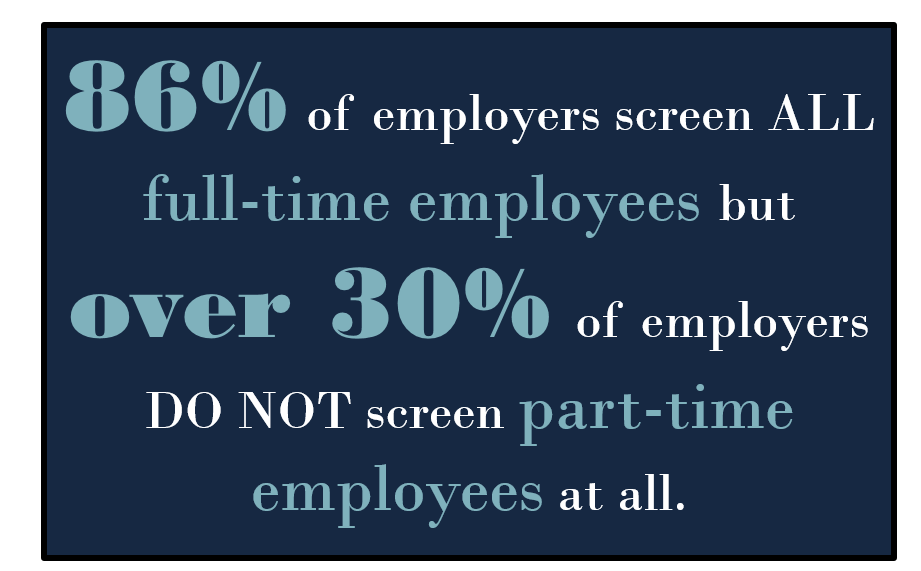“In an increasingly global economy, employers are rightfully placing a premium on the safety of employees and the community.”
So stated the second annual survey report How Human Resource Professionals View Background Screening Methods, released by the National Association of Professional Background Screeners (NAPBS) and HR.com (here). The survey sampled 2,137 HR professional participants from organizations around the country to gain insights into their approaches to background screening.
As stated in the report’s Executive Summary, “Employers continue to utilize professional background checks at a near universal rate…. The second annual survey… found that public safety was their top priority. Employers of all sizes and locations report using background screening as part of their onboarding process, with a majority waiting until after an interview or job offer to conduct the background check. The number one challenge reported continues to be the length of time in getting results.”
Forty-five percent of respondents represented organizations with less than 100 employees. Nearly half were from private sector entities, while 28 percent represented non-profit groups. Three-quarters of respondents said their company had a documented background screening policy.
Ninety-five percent of organizations responding conduct some type of employment background screening, and 86 percent screen all their full-time employees, though less than 70 percent screen all part-time employees.
Employers cited safety as the number one reason (86%) they conduct background checks, followed by quality hiring (52%), legal requirements (39%), protecting company reputation (38%), and preventing theft/crime (36%).
In near unanimity, respondents said that the accuracy of their background screens is “very important.” In general, respondents wanted their screening results to get to them quicker and cost less, as well: The two most significant challenges cited in the background screening process were “length of time to get results” (65%) and “cost of screening” (62%).
A large majority of respondents (60%) only conduct background screens during the hiring process, while 14 percent said they are required by law to do so at times other than the hiring process. Ten percent said they conduct background at times other than the hiring process, for cause.
With respect to types of screens used, as might be expected, 84 percent of respondents perform criminal records searches in all employee screens, with nearly 90 percent of respondents using county/statewide criminal records searches in all screens. The survey showed that employers are using drug and alcohol testing, motor vehicle driving records, and education verifications with greater regularity. Perhaps surprisingly, 73 percent of respondents said they never use social media searches in background screenings.
TruView is a proud member of the National Association of Professional Background Screeners and actively participates in association training, events, and conferences. TruView is also very proud of our own Lisa Worgull, Managing Director of Background Screening, who serves as the Co-Chair of the NAPBS Education Committee, which puts out relevant and timely training monthly for association members. For more information about NAPBS, please visit their website.





